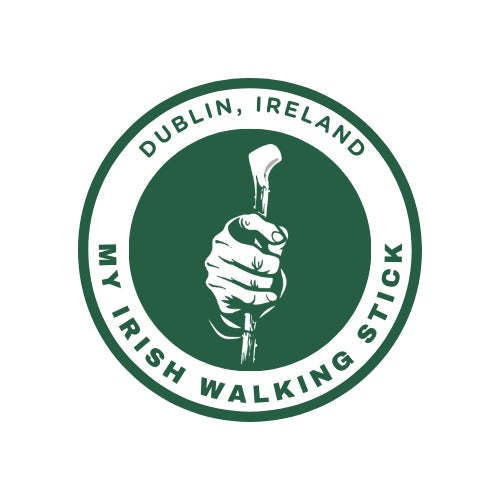Collection: Shillelaghs
Introducing our authentic Irish Shillelaghs, steeped in centuries of Celtic tradition and craftsmanship. Carved from the finest Blackthorn wood, these iconic symbols of Irish heritage exude strength, resilience, and timeless elegance. Each Shillelagh is meticulously handcrafted by skilled artisans, honoring the ancient techniques passed down through generations. With their distinctive knots and rich, dark hues, our Shillelaghs serve not only as formidable walking sticks but also as cherished pieces of cultural history.
Whether as a practical companion on outdoor excursions or as a striking display of Irish pride, our Shillelaghs invite you to embrace the spirit of the Emerald Isle with every encounter. Discover the unparalleled beauty and craftsmanship of our Irish Shillelaghs, where tradition meets craftsmanship in perfect harmony.
Frequently Asked Questions About Shillelaghs
What is a shillelagh? A shillelagh is a traditional Irish walking stick or club, typically made from blackthorn or oak wood. It is known for its durability and distinctive appearance, often featuring a knobby head and a polished finish. Historically, shillelaghs have been used both as walking aids and as weapons.
What wood is commonly used to make shillelaghs? Shillelaghs are most commonly made from blackthorn wood, but oak is also a popular choice. Blackthorn is favored for its strength and density, which make it particularly suitable for both walking and self-defense. The wood's natural hardness ensures that shillelaghs are sturdy and long-lasting.
What is the origin of the shillelagh? The shillelagh originates from Ireland and has a rich cultural and historical significance. It is named after the Shillelagh Forest in County Wicklow, where the wood was traditionally sourced. Shillelaghs were historically used by Irish gentlemen for self-defense and as a symbol of status.
How are shillelaghs made? Shillelaghs are crafted by selecting a suitable branch, typically from blackthorn or oak, and then seasoning it to dry out the wood. The stick is shaped, smoothed, and often polished, with the knobby root end forming the handle. Some shillelaghs are treated with oils or waxes to enhance their durability and appearance.
What are the different types of shillelaghs? There are primarily two types of shillelaghs: the walking stick type and the cudgel type. The walking stick type is longer and designed for support, while the cudgel type is shorter and intended for use as a weapon. Both types share the same characteristic durability and traditional craftsmanship.
Can shillelaghs be used for self-defense? Yes, shillelaghs have historically been used for self-defense. Their sturdy construction and weight make them effective tools for protection. Today, while they are primarily used as walking sticks, they retain their potential for self-defense.
Where can I buy a shillelagh? Shillelaghs can be purchased from specialty shops, particularly those that focus on Irish crafts and heritage items. They are also available from online retailers and marketplaces. Authentic, handcrafted shillelaghs are often sold by artisans who continue the traditional methods of making them.
Are shillelaghs used in any traditional Irish sports or activities? Shillelaghs are sometimes used in traditional Irish martial arts, such as Bataireacht, which involves stick-fighting techniques. While not as common today, these practices keep the cultural heritage of the shillelagh alive. Additionally, shillelaghs are often seen in cultural celebrations and parades.
How should I care for my shillelagh? To care for a shillelagh, keep it clean and dry, and occasionally apply a wood treatment oil to maintain its finish. This helps prevent the wood from drying out and cracking. Store it in a cool, dry place to avoid damage from extreme temperatures or humidity.
What makes a shillelagh different from a regular walking stick? A shillelagh is distinct from a regular walking stick due to its historical significance, traditional craftsmanship, and use of specific types of wood like blackthorn. It often features a knobby head and a polished finish, giving it a unique appearance. The shillelagh's dual purpose as both a walking aid and a weapon also sets it apart.
